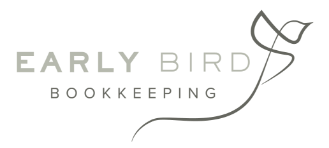With another quarterly estimated tax payment right around the corner (remember, these federal payments are due April 15th, June 15th, September 15th, and January 15th) you may be wondering what all this talk about estimated taxes is even about. Do you have to pay them? What are they? How do you pay them? Let’s dive right in.
Who Needs To Pay Estimated Taxes?
If you are self-employed, a contractor, or freelancer, you likely have to pay quarterly installments of estimated tax.
Because our tax system operates on a pay-as-you-go basis, taxpayers are required by law to pay most of their tax liability during the year. Since self-employed individuals typically do not get a paycheck which withholds this federal tax, you need to make estimates throughout the year. This means that an estimated tax penalty will normally apply to anyone who pays too little tax, usually less than 90% of your total tax due, during the year through withholding, estimated tax payments, or a combination of the two.
There’s an exception to the penalty for those who base their estimated tax payments on last year’s tax. Generally, taxpayers won’t have an estimated tax penalty if they make payments equal to the lesser of 90% of the tax to be shown on their current year return or 100% of the tax shown on their prior year return (110% if your income was more than $150,000).
What’s The Penalty?
In 2023, the penalty for not making your estimated tax payments is about 0.58% per month of the amount you should pay if your income stays exactly the same as the previous year.
Essentially, NOT paying quarterly taxes functions like a loan from the IRS at a 7% interest rate.
How and When Do You Pay?
The IRS provides a free electronic payment option, where taxpayers can schedule their estimated tax payments up to 30 days in advance, with Direct Pay (bank account).
Visit IRS.gov/payments to explore options to pay online.
Taxpayers can pay their estimated tax payments any time before the end of the tax year. Most taxpayers make estimated tax payments in equal amounts by the four established due dates. And as I mentioned before, the quarterly payments are due April 15th, June 15th, September 15th, and January 15th.
How MUCH to pay?
To avoid underpayment penalties, you have to meet one of these two IRS thresholds during the year:
- Pay 100% to 110% of Last Year’s Tax Liability:This is by far the easiest option. You just pay 100% of last year’s tax liability (or 110% if your AGI is over $150,000). So if you’re looking at your prior year tax return, take your tax liability on line 24 (say it’s $12K) and you divide it by 4. So your quarterly tax payments should be $3,000. If you had business income last year, your tax accountant probably gave you vouchers for quarterly tax payments. Be sure to make these!
- Pay 90% of This Year’s Tax Liability: This option is more complex but it helps guarantee no scary year-end tax bill! First it requires you to perform a pretty thorough tax calculation projection, but more importantly it requires you to have a good estimate of how much money you’re going to make this year at the very beginning of the year since the first quarterly payment is due in April. If you choose this option, I would advise you to work with a proactive CPA. If you are looking for a super high-level DIY estimate, multiply your business net income by about 30% – 35% each quarter and send that to the IRS.




